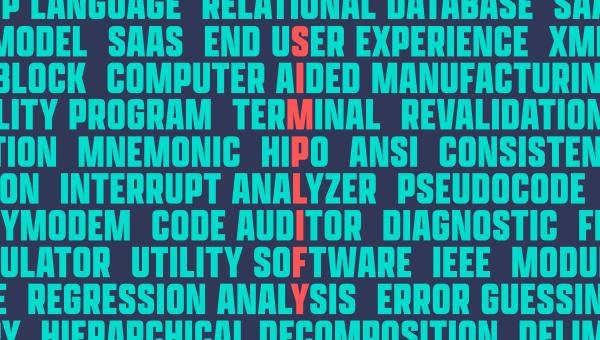How to Measure the Impact of Bite-Sized Learning: Key Metrics and Proven Benefits
With evolving workplace dynamics and digital conversion, bite-sized learning (also known as microlearning) has emerged as a game-changer. It offers fast, focused, and flexible learning experiences that boost knowledge retention and engagement. But how do you truly measure its impact? In this comprehensive guide, we’ll walk you through the key metrics, proven benefits, practical tips, and real-world case studies that will help you accurately evaluate the effectiveness of bite-sized learning in your organization.
What Is Bite-Sized Learning?
Bite-sized learning refers to teaching methods where content is broken down into short, digestible modules—typically no longer than 3-7 minutes. these microlearning modules focus on single concepts,skills,or actions,allowing learners to absorb data efficiently and apply it immediately.
- Examples: Short video clips, fast quizzes, infographics, interactive scenarios.
- Platforms: Learning Management Systems (LMS), mobile apps, WordPress-based eLearning plugins.
Why Is Measuring the Impact of Bite-Sized Learning Crucial?
As organizations invest in microlearning solutions, proving their effectiveness becomes vital for future planning, continued investment, and overall learning success. Accurate measurement helps:
- evaluate ROI (Return on Investment)
- Align learning initiatives with business objectives
- Optimize training programs for better performance
- demonstrate value to stakeholders
Key metrics to Measure the Impact of Bite-Sized Learning
Let’s dive into the most relevant bite-sized learning metrics. Leveraging these metrics can offer quantifiable insights into the success and areas for enhancement in your learning program.
1. Completion Rates
Track how many learners finish individual microlearning modules. High completion rates signal strong engagement and accessible content.
- Why it matters: Indicates learner motivation and effectiveness of the content structure.
- How to measure: Use LMS reporting tools or WordPress plugin analytics to monitor module completions.
2. Knowledge Retention
Bite-sized modules foster better memory retention. Evaluate knowledge through follow-up assessments or quizzes to measure learning transfer.
- Why it matters: Shows real learning,not just participation.
- How to measure: Pre/post quizzes, spaced repetition tests, or follow-up assignments.
3. Learner engagement
Engagement metrics—such as video views, interactions, comments, or likes—show how actively learners are participating.
- Why it matters: Critical for sustained learning cultures.
- How to measure: Track interaction rates on microlearning platforms and through LMS analytics.
4. Time to Competency
Microlearning helps employees reach proficiency faster. Measure the time it takes for learners to achieve defined competencies after module completion.
- Why it matters: Directly linked to productivity and training effectiveness.
- How to measure: Compare skill acquisition timelines before and after implementing bite-sized learning.
5. Behavioral Change
Assess how short learning units influence real-world workplace behavior, decision-making, or skills request.
- Why it matters: Shows tangible impact beyond the training environment.
- how to measure: Performance reviews, manager feedback, observation of workplace practices.
6. Return on Investment (ROI)
Calculate the financial benefits derived from microlearning vs. conventional training costs. Include factors like time saved, improved productivity, reduced errors, and enhanced performance.
- Why it matters: Justifies spending and showcases bottom-line benefits.
- How to measure: Analyze cost savings and value generation post-implementation.
7. Learner Satisfaction and Feedback
Gather qualitative feedback from learners using surveys, polls, or discussion forums to understand how bite-sized content meets their needs.
- Why it matters: Pinpoints areas for continuous improvement.
- How to measure: use built-in survey or WordPress feedback plugins to collect data.
Proven Benefits of Bite-Sized Learning
Research and organizational experiences prove that microlearning benefits go beyond convenience. Hear’s what makes bite-sized learning indispensable:
- boosts Knowledge Retention: short, focused modules enhance recall and reduce cognitive overload.
- Greater Engagement: Interactive content is more motivating and less time-consuming, fitting easily into busy schedules.
- Adaptability and Accessibility: Mobile-friendly learning enables just-in-time access from anywhere,anytime.
- Cost-Effective Delivery: Lower production costs compared with lengthy traditional courses.
- Immediate Application: Microlearning empowers learners to apply new knowledge or skills instantly.
Practical Tips to Maximize Bite-Sized Learning Impact
- Define Clear Objectives: Ensure each microlearning unit serves a specific, measurable learning outcome.
- Use Data Analytics: Integrate LMS or WordPress eLearning plugin analytics for ongoing monitoring.
- Continuous feedback: Encourage learners to share feedback for iterative content improvements.
- Spaced Repetition: Reinforce learning through spaced reminders or follow-ups to boost retention.
- Personalization: Tailor microlearning journeys based on learner profiles and progress.
Case Studies: Real-World Impact of Bite-Sized Learning
Case Study 1: Tech Company onboarding
A leading technology firm replaced traditional onboarding with microlearning modules hosted on a wordpress LMS. Results over three months included:
- 30% increase in employee onboarding completion rates
- 50% faster time to competency
- Significant boost in engagement, with 80% of new hires rating the process as “highly effective”
Case Study 2: Healthcare Compliance Training
Microlearning videos and quizzes helped a hospital system cut regulatory training times by 40%. Knowledge retention scores climbed by over 25% post-implementation. Feedback highlighted the convenience and relevance of bite-sized content.
First-Hand Experience: Corporate Sales Team
The sales department at a retail company reports:
- “Microlearning lets us quickly update product knowledge, keeping the team sharp and confident.”
- “Short quizzes after each module really help us remember key points we can use in client meetings.”
Integrating Bite-Sized Learning in WordPress-Based eLearning
WordPress offers a range of eLearning plugins to deploy and track microlearning. Tips for integration:
- Choose plugins with rich analytics features (e.g., LearnDash, LifterLMS)
- Utilize responsive design for mobile accessibility
- Incorporate quizzes, feedback forms, and completion badges to increase user interaction
Conclusion: Harness the Power of Bite-Sized Learning Metrics
Bite-sized learning is transforming training and development across industries—with measurable results. The secret to maximizing its impact lies in tracking key performance metrics, listening to learner feedback, and continually refining your approach. Whether you use LMS or a WordPress eLearning solution, focusing on completion rates, knowledge retention, engagement, competency speed, behavioral change, and ROI will empower your organization to prove and improve the effectiveness of microlearning.
Start measuring your microlearning impact today—and unlock the full potential of modern, learner-centric training!

